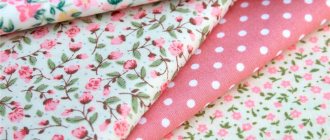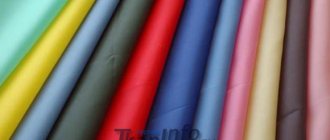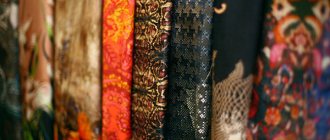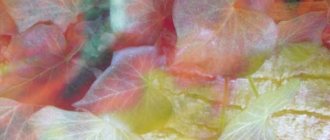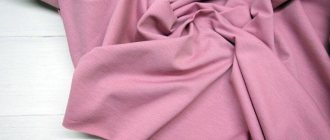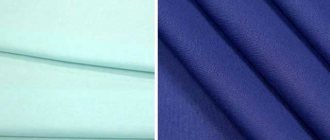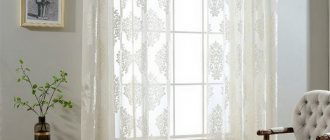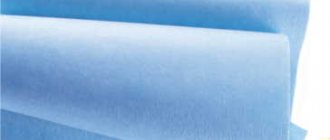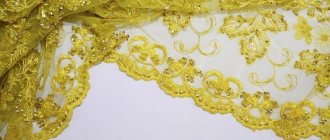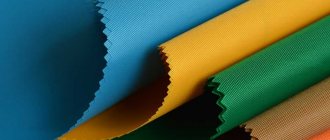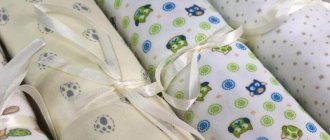What thoughts do you have when choosing clothes? Of course, each of us wants to buy a stylish thing that will correspond to fashion trends. In addition, it should be pleasant to the body. Do you think about the properties of a material? It is imperative to take into account the characteristics of a particular canvas.
A natural item will allow air and moisture to pass through, giving comfort and convenience. Synthetic analogues are also good. They are easy to care for and incredibly durable. You should also think about whether the material will quickly lose its attractive appearance, that is, take into account the predisposition to wrinkles. Fabric that does not wrinkle will always allow you to look neat and tidy.
What kind of fabrics is it advisable to buy things from so as not to worry about appearance during the day? Read on.
Designation of abbreviations for types of fabrics
To correctly determine which care methods are right for your clothes, you need to know the type of material from which they are made. You will find special designations on the tag sewn to the inside of the item, and to decipher them, use the following table:
| A.C. | Acetato/Acetate/Acetat/Acetate | acetate fiber |
| A.F. | Sonstige fasem/Another fibre/Autres fibres, as well as EA | other fibers |
| C.A. | Canapa/Hemp/Hant/Chanvre | hemp fiber |
| Co | Cotone/Cotton/Baumwolle/Coton | cotton |
| Cu | Cupro/Cupro/Cupro/Cupro | copper-ammonia fiber |
| E.A. | Altre fibre/Other fibres, as well as AF | other fibers |
| EL | Comma/Bubber/Elastodien/Elastodiene/Elastan/Elasthan/Elasthanne | elastane |
| H.A. | Pelo/Hair/Haar/Poil | bristles, hair thread, pile |
| H.L. | Limisto/Union Linen/Halbleinen/Metis | flax with impurities, semi-linen fiber |
| Li | Lino/Linen-Flax/Flaxes, Linen/Lin | linen |
| Ly | Laychra/Laycra | lycra |
| Ma | Modacrylice/Modacrylin/Modacryl/Modacryliqe | modified acrylic |
| MD | Modal/Moadal/Modal/Modal | modified viscose fiber |
| Ny | Nylon/Polyamide | nylon, polyamide |
| Me | Metal/Metal/Meta | metallized thread |
| PA | Acrilica/Polyacrylic/Polyacryl/Acrylique/Acrilico/Acrylic | acrylic |
| P.L. | Polyester/Polyester/Polyester | polyester, polyester fiber |
| P.E. | Polietilen/Polyethylene/Polietileno | polyethylene fiber |
| PP | Polypropilene | polypropylene fiber |
| P.U. | Polyuretanica/Polyurethane/Polyurethan | polyurethane fiber |
| R.A. | Ramie | nettle fiber (ramie) |
| R.S. | Rubber artificial | rubber, artificial rubber |
| J.U. | Juta/Jute | jute |
| S.E. | Seta/Silk/Seide/Soie | silk |
| S.W. | Silkworm | silkworm |
| T.A. | Triacetato/Triacetate/Triacetat | triacetate |
| TR | Residut tessili/Textile residual/Restlich Textil/Residu Textile | industrial weaving residues, composition arbitrary |
| VI | Viscosa/Viscose | viscose |
| R.V.C. | Polyvinylchloride/Polyvinylchloride | polyvinyl chloride, polyvinyl chloride |
| PVCF | Polyvinylchloride fiber | polyvinyl chloride fiber |
| W.A. | Angora/Angora (karin) | wool fiber from angora goat |
| WO | Lana/Wool/Woole/Lane/Laine/Wolle | wool |
| W.K. | Camello/Camel/Kamel/Chamean | camel's wool |
| W.L. | Lama/Liama | llama wool fiber |
| W.M. | Mohair | mohair, wool of the Angora goat dressed in a special way |
| W.S. | Kashmir/Cashmire/Cashmere/Kaschmir | cashmere |
| W.P. | Alpaca/Alpaca | alpaca |
| W.Y. | Yach/Yak/Yack | yak wool |
How to care for a wrinkle-resistant shirt
- When machine washing, select the delicate cycle. The machine should operate at low speeds.
- After washing, the shirt can be dried in the machine and put on immediately. If there is no drying function, hang it on a hanger and let it dry. Don't worry if the fabric doesn't look completely smooth. The warmth of your body will cause the fibers of a quality item to straighten out and it will look perfect.
- If desired, you can iron the shirt just a little.
In this article, we talked about how to choose a quality shirt made from wrinkle-resistant fabric for both men and women. Such things make our life easier and save time, but high-quality wardrobe items require material investments in return. An alternative is to follow the example of our mothers and grandmothers by starching ordinary cotton shirts and looking just as chic. In addition, on sale today there are a lot of ready-made liquid products based on starch, as well as sprays that need to be sprayed on the item before ironing. Therefore, the choice is yours - save time or money. The main thing is not to skimp on your health by purchasing low-quality items; you can seriously harm your body.
What are the advantages and disadvantages of shirts that do not need to be ironed?
Among the advantages it should be noted:
- maintaining a presentable appearance throughout the day;
- saving time due to the absence of the need for careful ironing;
- ease of use while traveling;
- relatively low prices from a number of manufacturers.
The disadvantages are the following:
- reduced service life due to chemical treatment of the fabric;
- some shirts have a less solid appearance compared to regular cotton ones;
- a number of processing chemicals (sometimes formaldehyde) can cause an allergic reaction;
- The price is too high for a quality product.
Wrinkle-resistant fabrics for skirts
There are many fabrics that would not wrinkle. But when choosing a skirt, you must first understand what season it is being sewn for.
It is important to take into account the purposes: everyday wear, evening wear, a product under a certain jacket or sweater
From wrinkle-resistant materials, you should pay attention to such canvases
- Gabardine;
- Polyester;
- Rayon;
- Acetate;
- Wool fabrics;
- Mixed fabrics;
- Cotton (thick).
Gabardine
The fabric, made of woolen thread, is very practical and comfortable to wear.
Advice. A gabardine item would be appropriate for a business suit or for the office.
The material does not wrinkle, is beautiful when draped, does not stretch or lose its shape.
A skirt made of such gabardine will not only be pleasant to the body, but also durable. Gabardine looks impressive when sewing skirts and dresses.
Polyester
A practical synthetic fiber that is suitable for sewing a skirt. The variety of colors allows you to make many styles to suit every taste.
Has the fabric shrunk? decatification methods
Reference. Polyester is a material that repels moisture and is very practical for everyday use.
The skirt made of it does not wrinkle, dries quickly, and is comfortable to wear and wash. Does not require special conditions for care.
Rayon
Textiles that are ideal for all those who love elegance.
It is not always easy to visually distinguish artificial silk from natural silk, and the price of the product is much lower.
Universal material for a wrinkle-resistant skirt. Beautiful, light fabric is suitable for sewing summer clothes, office suits, and will also look good in evening dresses.
Woolen
It looks very interesting in different colors; the canvas with a pattern or in a single color looks elegant.
Woolen fabrics work well both as a business skirt and as a skirt for walking or free time.
Solid quality wool, lined or unlined, will retain its shape and still look stylish.
And canvases with a pattern will help the product emphasize its special original design.
What is acrylic thread for knitting? composition, properties of threads, mixed threads. advantages and disadvantages. What can you knit from acrylic?
Mixed fabrics
One of the most convenient options for sewing a skirt. Such fabrics do not wrinkle, fit well to the figure, thanks to the combination of different fibers in the material, they keep their shape perfectly.
Thick cotton
The fabric should be considered as a fabric for a skirt for every day. It will perfectly complement almost any everyday outfit and at the same time will be comfortable to wear. Cotton breathes and goes well with many other fabrics.
Silk trousers
Their silk trousers look very elegant. Silk men's suits are particularly elegant. In a woman's wardrobe, trousers made from this type of fabric can be both an element of an evening outfit and a casual one. They add femininity and luxury to the look.
Silk can be natural or synthetic. Natural silk is made from silkworm cocoons. A silk thread consists of twisted fibers in the amount of 5-8 pieces, their diameter is very small, so the silk thread is light and thin. There are many varieties of silk fabric, they differ in the way they are weaved: satin, satin, chiffon, crepe, gauze, organza.
Properties of silk fabric:
- shine;
- smoothness;
- good density;
- wrinkles slightly;
- easy to drape;
- cools the body in hot weather;
- washes well;
- soft to the touch and pleasant to the body.
Which fabrics wrinkle the least?
What do you think about when carefully studying labels when choosing new clothes? Perhaps you pay attention to the composition of the fabric to compare the ratio of natural and synthetic fibers, or you are concerned about the possibilities of machine washing, or maybe you just do it mechanically, without even thinking about the properties of the fabric. In fact, data on the composition of the fabric allows you to determine the characteristics of care and predict how long the item will last you, and how much the clothes will wrinkle when worn
What fabrics are best to choose in order to always look neat?
In fact, data on the composition of the fabric allows you to determine the characteristics of care and predict how long the item will last you, and how much the clothes will wrinkle when worn. What fabrics are best to choose in order to always look neat?
Try wrinkle-resistant shirts now at a special price.
Synthetic and artificial fabrics
As you know, synthetic fabrics are the most durable, picky, and most of them are also practically wrinkle-free. The latest generation of artificial and synthetic fabrics are especially versatile. Here are the most popular fabrics used for making clothes.
Acetate silk (acetate, triacetate)
Calculation of fabric consumption for the product. using the example of a half-sun skirt pattern
Artificial silk, obtained from triacetyl cellulose, is a shiny, smooth and quite durable material. Unlike natural silk, it practically does not wrinkle and does not require ironing, and clothes look like new for a long time.
Polyester (polyester)
A very popular synthetic fiber, which is perfect for the production of thin and dense fabrics. Things made of polyester do not wear out for a long time, allow air to pass through well, do not shrink when washed and do not wrinkle.
Polyurethane fibers are used to make elastic fabrics such as lycra, spandex and elastane. These fabrics are indispensable for sports suits, underwear, swimsuits, and medical corsets. However, fabrics made from 100% polyurethane thread are never used for sewing clothes. But the combination of other types of fibers with polyurethane allows you to get an ideal fit, sophisticated appearance and wrinkle resistance.
Modern polyamide fabrics are no longer banal nylon and nylon, but types of microfiber polyamide produced on high-tech equipment such as microfiber, meryl and tactel. Thanks to new technologies, these strong, durable and wrinkle-resistant fabrics have become breathable and hygroscopic.
Semi-synthetic or mixed fabrics
All of the listed synthetic fibers are intertwined with natural ones in different proportions, resulting in fabrics that combine the advantages of natural and synthetic materials. One of the main goals of such mixing is to solve the problem of strong creasing of natural fabrics.
The item will be more practical and wearable, and most importantly, it will wrinkle less if it is made from various mixtures: cotton with nylon and spandex, linen with viscose and elastane, wool with acrylic and viscose.
It would seem that the conclusion suggests itself: the best option for a wrinkle-free wardrobe is mixed fabrics with different percentages of natural and synthetic fibers. But not everything is so simple, so do not rush to discount natural materials.
Natural fabrics
Of course, the most difficult thing for fans of natural fabrics is to choose wrinkle-resistant clothing. Unfortunately, almost all fabrics containing 100% natural fiber (linen, cotton, silk) wrinkle very much when worn. Woolen fabrics are less susceptible to wrinkles than others due to their higher fiber density, but thin suiting fabric still wrinkles often.
The crease resistance of cotton will largely depend on its quality: the higher it is, i.e. The stronger the twist of the fibers, the less wrinkled the cotton clothing is. Perhaps this is why ardent “fans of naturalness” claim that the noble fabrics from which expensive shirts are sewn wrinkle nobly.
The latest developments in this direction have led to the appearance of clothing made from 100% cotton fabric with special treatment that prevents wrinkles. Such things are very easy to care for, since they practically do not need to be ironed, even after washing.
In addition, they retain all the advantages of natural fabrics: they are pleasant to the body, allow moisture and air to pass through well, allowing the body to breathe, and have a good appearance. Men's non-iron shirts are especially popular, an indispensable attribute of a modern businessman.
Features of denim care
Jeans should be washed inside out. For washing, powders and conditioners for this type of fabric are used. Machine washable on delicate cycle. It is not advisable to wring out; it is better to leave the trousers so that the water drains. Denim shrinks a little after washing .
After rinsing and spinning, it is recommended to lay out the item and stretch it slightly with your hands, giving it the desired shape. Ironing for denim items is not necessary, but you can iron them from the wrong side by moistening them with a spray bottle.
overview of natural and synthetic materials
What thoughts do you have when choosing clothes? Of course, each of us wants to buy a stylish thing that will correspond to fashion trends. In addition, it should be pleasant to the body. Do you think about the properties of a material? It is imperative to take into account the characteristics of a particular canvas.
A natural item will allow air and moisture to pass through, giving comfort and convenience. Synthetic analogues are also good. They are easy to care for and incredibly durable. You should also think about whether the material will quickly lose its attractive appearance, that is, take into account the predisposition to wrinkles. Fabric that does not wrinkle will always allow you to look neat and tidy.
What kind of fabrics is it advisable to buy things from so as not to worry about appearance during the day? Read on.
Synthetic materials
To sew clothes that will not wrinkle during wear, the following fabrics are used:
- Rayon. A summer skirt or trousers made of acetate, also known as triacetate, will become your favorite item. Why? It will not tear, as it is incredibly durable, does not need ironing and does not lose its original color after numerous washes.
- Polyester. Recently, many manufacturers have been producing items made from polyester fibers. For example, a dress made of polyester is easier to sell than an analogue made of linen or natural silk. It costs much less! Light summer material does not wear out over the years, does not shrink, does not wrinkle. Moreover, upon contact with the body, there is no “greenhouse effect”, which increases the secretion of sweat and causes discomfort.
- Polyamide fabrics. This group combines not only nylon and nylon, but also Meryl, microfiber, and tactel.
The last three materials are the result of the use of high-tech equipment in production. Meryl, microfiber and tactel do not wrinkle, are endowed with breathable properties and hygroscopicity.
Polyurethane. What is unique about this lightweight, wrinkle-resistant fabric? It is elastic, so it easily restores its original shape after prolonged wear. The polyurethane group of fabrics includes the following: elastane, spandex, lycra. Wrinkle resistance and perfect fit are what make them superior to any analogues.
Synthetic fabrics cannot be called bad. The set of properties largely depends on the price. Cheap things, of course, will not allow air to pass through and will cause discomfort.
Blended fabrics
Semi-synthetic materials are also resistant to creasing. Wrinkle-resistant combinations include the following:
- Viscose + elastane + linen.
- Nylon + spandex + cotton.
- Acrylic + viscose + wool.
Blended fabrics are good because they combine the advantages of natural and synthetic fibers. An experienced buyer who wants to buy a cool, wrinkle-resistant suit will choose products made from semi-synthetic materials.
New clothes will not only fit perfectly, but will also serve faithfully for many years. The suit stretch is also elastic and protects against the cold.
Natural canvases
Do you absolutely not wear things that contain synthetics? Natural material is also wrinkle-resistant. Which one are we talking about? About exceptionally high quality canvases! Wool, especially suit wool, does not wrinkle due to its density. We can talk about resistance to the formation of folds and creases of other materials only in the case of very strong twisting of the fibers.
Modern manufacturers have learned to treat natural fabrics with special compounds that are safe for human health, as a result of which the products do not need to be ironed and steamed.
Care
Washing and caring for wrinkle-resistant items depends on the type of fabric it is. The type of material, its characteristics and properties should be taken into account:
Nylon (polyamide) can be cleaned in an automatic washing machine on a gentle cycle. The water temperature should be up to 40˚ C. Nylon products cannot be wrung out in a centrifuge and dried in a drying drum. Things made from such fabric should be hung to dry. If necessary, ironing can be done using the “Silk” program, without steam.
Polyester is also machine washable. If the washing water is hot (above 40˚ C), wrinkles will appear on the fabric that are practically impossible to smooth out. White items are washed with ordinary washing powders, while colored items are washed with powders designed specifically for synthetics. Polyester dries very quickly and does not need ironing. If necessary, you can iron the fabric through damp gauze on the “Silk” program.
Acetate and triacetate are composed of cellulose acetate. Any material containing acetate must be washed in the “Hand Wash” program at a temperature not exceeding 30˚ C. Fabric with triacetate can be washed in a normal mode, and the water temperature can be up to 70˚ C. Drying acetate and triacetate in a dryer is prohibited. Items made from such fabrics must be hung to dry. Triacetate can be ironed on the “Silk” or “Wool” program.
Thick cotton. White fabric can be washed at a temperature of 95˚ C, colored fabric - at a maximum of 40, otherwise the colors will fade very quickly. Drying in a washing machine may cause significant shrinkage of the product. Cotton should be hung to dry, and it is better to iron slightly damp items by setting the iron to the “Wool” (for coated cotton material) or “Cotton” mode.
Thick wool. The maximum water temperature when washing is 30˚ C. There should be a lot of water when washing; you should not rub or twist the fabric. Drying woolen products in special drying devices, in direct sunlight or on central heating radiators is strictly contraindicated. If necessary, ironing should be done on the “Wool” program through a damp cloth.
The composition of mixed fabrics is usually written on a label; it is extremely difficult to independently determine which fibers the material is woven from. It is necessary to know the composition in order to properly wash and care for an item.
To determine the predominant component, hold a piece of material about 5 cm long over the fire. Once the fabric catches fire, place it in a fireproof container and watch how the scrap burns:
- viscose, cotton and linen burn with flame and quickly, while the smell of burnt paper is felt;
- wool burns without flame with the presence of the smell of burnt hair;
- synthetics do not burn, but melt, turning into a solid ball.
Acetate fabrics can be dissolved with regular hairspray.
Features of caring for viscose fabric
Viscose belongs to the category of delicate fabrics; caring for it is not difficult, but requires care. Wash viscose trousers using the machine’s “hand wash” and “delicate wash” modes. Use gentle detergents without chlorine components. Spinning for viscose is not recommended . After washing and rinsing, the item is wrapped in a towel. When the water is absorbed, it is laid out horizontally on a table covered with a dry sheet. Periodically, the trousers are turned over. You can iron viscose fabric with a warm iron through gauze.
What is the breathability of fabric
The ability of a fabric to pass air through itself is called its breathability and is one of the most important characteristics of textile materials that determine the comfort of the future product.
The breathability of the fabric depends on the following parameters:
Material composition
Natural fibers have the highest breathability, while synthetics have a low air permeability (with the exception of membrane materials).
The group of natural breathable materials includes linen, cotton, wool, silk, nettle and hemp fabrics, as well as viscose, lyocell cellulose fabric and bamboo fabric.
Density
The breathability of a fabric is affected by its density. The more densely the threads are located in the structure of the material, the less it “breathes”. So, a mesh fabric made of synthetic fibers will allow air to pass through well, while dense drape and very dense cotton fabrics have very low breathability.
The breathable properties of different groups of fabrics are shown in the table.
| Material group | General characteristics of breathability | Air permeability (value given in ml/cm2s at a pressure of 1 mm water column) |
| Thick draperies, cloth and very thick cotton fabrics | Very small | Less than 1 |
| Wool suiting fabrics | Small | 1-3 |
| Light suiting, linen, dress and demi-season fabrics | Below average | 3-10 |
| Linen and light dress fabrics | Average | 10-30 |
| The lightest underwear and dresses with large through pores | Increased | 30-50 |
| Mesh (mesh, gauze, knitwear, canvas, etc.) | Higher | More than 50 |
Methods for determining the breathability of fabric are specified in GOST 12088-77. Point samples selected for control are placed diagonally. Tests are carried out using a special device that measures the amount of air that passes through a control sample under constant pressure differences.
What materials always look neat?
It is well known that synthetic fibers, especially the latest generation, practically do not wrinkle. To a lesser extent, viscose and natural materials have these qualities. By grouping fabrics according to the criterion “which wrinkles less,” you can get the following sequence:
- Polyester.
This is the most common fabric nowadays, made from polyester fibers. It is well known that synthetic fibers, especially the latest generation, practically do not wrinkle. Polyester of various thicknesses and textures is used for a suit, trousers, dress or skirt that will not need ironing. It is also used for outerwear, linen (including bed linen), curtains, home textiles, etc. It should be borne in mind that light clothes, especially blouses or summer dresses made of this fabric, including the fashionable micro-oil material, are not very comfortable, since they do not allow air and moisture to pass through well. - Polyamide (nylon). This material is more expensive than polyester and is currently used for outerwear, haberdashery, etc., and also as an additive to mixed fabrics.
- Thick cotton. Low-wrinkle materials are denim, which is used for trousers, skirts, dresses, and cotton terry, which is used for bed linen and home textiles.
- Acetate (triacetate). These fibers, like viscose, are artificial materials made from cellulose. The fabrics made from them are similar to natural silk (although less durable), hygroscopic and allow air to pass through well, are pleasant to the touch, and most importantly, they hold their shape perfectly and practically do not need ironing. This material is suitable for an elegant dress, blouse, skirt, suit, bed linen, curtains and other products.
- Wool materials. Dense woolen fabrics, especially those with a brushed surface, have reduced creasing.
- Mixed fabrics. It is known that the optimal combination of various beneficial properties is obtained by combining various elements. This fully applies to mixed fabrics. Cotton, wool, viscose, silk in combination with polyester or polyamide retain the ability for thermoregulation, air exchange and moisture absorption, but at the same time gain strength and resistance to deformation.
Fabrics made from a mixture of synthetic and natural fibers can be considered market leaders.
And the addition of polyurethane fibers (lycra, spandex, elastane) to fabrics makes the material not only wrinkle-resistant, but also elastic. They have:
- capillary structure;
- ideally absorb sweat, fat and dirt;
- allow air to pass through and retain heat;
- and the fabric made from them is very light, durable and does not wrinkle.
The most famous material of this type is called microfiber; modal, which is based on viscose made using microfiber technology, is also popular. They are ideal for making tracksuits, underwear, socks, tights, etc.
New generation of natural fibers
Although the improvement of technology has convincingly proven that synthetic materials are not only not inferior to natural ones, but can in many ways surpass them, natural fabrics find many adherents, and the problem of reducing the creasing of cotton or linen still remains relevant. To solve this problem, improvement of the properties of natural fiber is used, in particular, strengthening of its twist, and special weaving technologies.
Natural wrinkle-resistant fabrics include reaper, which is produced by crepe weaving of cotton, silk, wool, and synthetic fibers. The header has a relief spring structure; it is very durable, although somewhat rough to the touch.
Recently, the market has been offering products (mainly men's shirts and bed linen, less often uniform dresses, etc.) with special markings indicating that they do not need to be ironed. They are made from easy-to-care cotton fabric with a special impregnation that prevents wrinkles or creases from appearing during wear and after washing. At the same time, the material is as hygienic and pleasant to the touch as natural cotton. Work in this direction is carried out simultaneously by several companies that use different markings, for example, wrinkle-free, wash and wear, wash&go, non-iron, etc. A washed item with such an indication on the label can simply be dried flat or on a hanger, and your shirt will always seem freshly ironed, and your bed will always seem freshly made.
What fabric does not wrinkle and what to do to make clothes wrinkle less
For evening walks in Prague, I bought a light summer dress in boho style. The trip around Europe was planned by bus, and in small hotels I had to run around looking for an iron, wasting precious time on ironing. After returning from the trip, I started thinking about what fabrics don’t wrinkle and what to do so that dresses don’t wrinkle so much.
What determines the wrinkleability of fabric?
First I studied the theory. It turns out that the property of creasing and wrinkling is inherent in most fabrics. But the homogeneous structure of synthetic fiber allows it to quickly restore its shape after mechanical stress. Fine? Yes, but in return we get the inability to absorb moisture and let air through.
Threads created by nature from silk, linen, cotton and wool are loose in structure. They have air-filled cavities, which, on the one hand, create comfort for our body. On the other hand, they deform under loads and the smoothness and evenness of the surface are disrupted.
Thick, dense materials wrinkle less than thin and airy materials. The way of weaving the weft and warp threads is also important: jacquard wrinkles more difficult than satin and crepe de Chine, which wrinkle less than simple linen.
Life hack: how to fold a shirt correctly so it doesn’t wrinkle.
Wrinkle or not
I spent the next part of the study in the fabric department, checking the creaseability of individual samples. To do this, I squeezed the edge of the material tightly in my palm, counted to 10, then evaluated the effect. On some fabrics, creases disappeared right before our eyes, while others formed deep folds.
Natural silk and linen turned out to be the clear leaders in the company of highly wrinkled fabrics. The multifunctional and inexpensive viscose material - staple - wrinkles well and noticeably. Thin cotton fabrics popular in hot weather (gauze, cambric, chiffon, muslin) also formed strong, numerous creases. Satin, chiffon and Indian fabric - bengalin - were in no way inferior to competitors in the formation of folds and creases. But their edges are not as sharp as those of cotton fabrics
At the next stand, my attention was drawn to a fabric with the strange name lyocell. It turned out that this mixed viscose fabric has all the properties of natural materials
Surprisingly, when I opened my fist, I saw that all the folds were slowly straightened out, the surface remained smooth. Also, polyester-based fabrics turned out to be practically wrinkle-resistant. Knitted fabric, elastane, stretch polyester.
Ways to solve the problem
I figured out the creasing of fabrics. It's time to solve the next problem. What should I do to prevent the fabric on trousers, skirts, and shirts from becoming wrinkled? The third part turned out to be experimental. In practice, home and store-bought remedies were tested. The experiment involved a staple dress, a snow-white cambric shirt and six linen napkins.
Good old starch
The first remedy that came to my mind was starch. I diluted a tablespoon in a liter of cold water and soaked napkins in the solution. Then I ironed them with a hot iron, the process went without a hitch. A thin glossy film has formed on the surface of the napkins. Grandma said that this way the napkins not only look more beautiful, but also get dirty less and last longer. In her youth, bed linen, valances, and formal linen tablecloths were starched. Well, the result is good, the napkins passed the family dinner test.
See how to fold a T-shirt so it doesn't wrinkle.
Store-bought starch-based products
I washed the staple dress with liquid starch from EuroNOVA. I poured the measuring cup into the rinse compartment and started the machine. The slightly damp dress was easily ironed, the fabric looked natural after all the procedures, the folds lay in light waves. I was pleased with the result.
Starching spray
When I took a closer look at the starch products at the household chemicals store, it turned out that there was plenty to choose from. For a cambric shirt I chose Luxus starching spray. Sprayed it on my blouse. It did not leave any stains, did not stick to the sole of the iron, and left a pleasant impression. During wear, the shirt wrinkled, but at the same time it looked quite presentable.
Girls, wear clothes made from natural fabrics and look flawless.
Watch the video on how to fold clothes so they don't wrinkle.
Where and for how much can I buy it?
You can purchase bed linen that does not need to be ironed at almost any home improvement store or large hypermarket. You can order online without any problems.
Among the manufacturers note:
- "Comfort-Textiles".
- "ArtDesign".
- KPB Terry Kartex.
- GOLDTEX.
- .
- TC "Terra".
The estimated cost depending on the fabric is presented in the table:
| Material | Price |
| Percale | From 1500r |
| Poplin | From 1500 rub. |
| Mahra | From 2500 rub. |
| Crinkled silk | From 3000 rub. |
What fabrics don't wrinkle?
What materials are best to choose if you don’t want to constantly fiddle with the iron? Absolutely all fabrics wrinkle, except, perhaps, special modern materials that have “memory” - capable of restoring their original shape over time or from heat. But such fabrics cannot be found on store shelves, so it is worth considering traditional natural, synthetic and mixed materials. All fabrics wrinkle, with the difference that some do it faster, some more slowly. For example, thin, dense synthetic fabrics hardly wrinkle:
- Nylon;
- Polyester;
- Rayon;
- Lycra;
- Microfiber.
Modern blended fabrics made of cotton with the addition of elastane, nylon, and polyester are also difficult to wrinkle. Synthetics add elasticity and strength to the fabric and do not wrinkle easily.
Natural materials that are resistant to creasing are fabrics with a pronounced loose texture or fleecy surface - on such materials creases and folds are simply not visible:
Clothes made from fabrics that do not wrinkle easily are convenient because after extensive use, and sometimes even after machine washing, they do not require an iron. Choose modern natural fabrics with special treatments or blends, and enjoy the comfort and beautiful appearance of clothes that do not require an iron.
Creases: how to eliminate them quickly and correctly
If thin fabric wrinkles, then creases will form on denser material. To get rid of them, you will also have to resort to certain tricks.
So, how to get rid of creases on clothes:
- Jeans. Steam the washed item (it is advisable to use a special steam generator), and then iron it thoroughly. Don’t be afraid to use the maximum temperature - it’s impossible to burn high-quality jeans.
- Leather (eco leather, leatherette). It is possible to straighten such crumpled fabric only by using a thick napkin or any other piece of fabric, and adhering to the required temperature regime (it is indicated on the label). You can also use the press method or steamer. There are special products for leather products that will help deal with any creases. Nut butter, glycerin or Vaseline will also be a good helper.
- Velvet (and other fleecy fabrics). There are special metal brushes that are used to steam and iron velvet. Since the structure of this fabric is specific, the fight against creases is also special.
- Synthetic products. Only ironing at a low temperature is suitable for them. And remember that the iron needs to be moved across the fabric, and not moved, since the folds formed by the iron are almost impossible to remove. The use of steam is not at all encouraged; most synthetic products shrink or stretch.
There is a philosophical idea that “life is too short to waste time on such trifles as ironing clothes.” But looking sloppy, unkempt and untidy is even more stupid. Therefore, fight the creases as much as possible and remember that a flawless appearance is the first thing that shapes your image.
